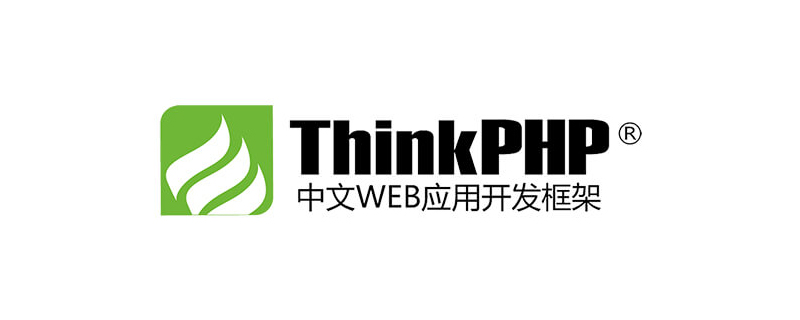
ThinkPHP U method
The U method is a shortcut method built into ThinkPHP that can dynamically generate intelligent URL addresses based on the system URL mode configuration. .
Since ThinkPHP supports a variety of different URL patterns, as well as project grouping patterns, when the deployment environment changes, the URL pattern may sometimes be changed, and the U method is exactly what solves the problem of different environment configurations. The problem of URL unification. In addition to dynamically generating URLs to adapt to system configurations, the U method also has the benefit of automatically adding pseudo-static suffixes.
U Method syntax
U method definition rules are as follows:
('[分组/模块/操作]?参数' [,'参数','伪静态后缀','是否跳转','显示域名'])
The square brackets are optional parameters. If the group, module and If operating, it will default to the current group, current module and current operation.
U method example
U method is a system function of ThinkPHP and can be used directly in operation methods or in templates (see the following text).
Assume that the current index operation is the Index module, generate the list operation URL of the current module:
U('list?cat_id=1&status=1')
The generated URL is a relative link: http://www.5idev.com/index.php /Index/list/cat_id/1/status/1
At the same time, the U method also supports the following two definition formats. The above example is equivalent to the following definition format:
U'list',array('cate_id'=>1,'status'=>1)) U'list','cate_id=1&status=1')
Use U method in template
U method can not only dynamically generate URL addresses in operation methods, but is actually more commonly used to generate hyperlink addresses in templates:
超链接字符
Generate The actual html code after the URL is:
// Pathinfo 模式: <a href="http://www.5idev.com/lindex.php/blog/list/cat_id/1/status/1">超链接字符</a>
The U method belongs to the ThinkPHP system function and follows the general method of using system functions in templates, that is, used with {: }.
Use variables in the U method
Use the U method in the template. If you want to use variables (usually), you need to use the . connector:
<a href="{:U('blog/list?cat_id='.$vo['cat_id'].'&status=1')}">超链接字符</a> Comparison of U method results under various URL modes
The U method adaptively generates different URL formats according to various URL modes, as shown in the above example generated in each mode The URL comparison is as follows:
Normal compatibility mode: http://www.5idev.com/index.php?m=Index&a=list&cat_id=1&status=1
Pathinfo mode: http://www.5idev.com/index.php/Index/list/cat_id/1/status/1
Rewrite mode: http ://www.5idev.com/Index/list/cat_id/1/status/1
Rewrite mode, pseudo-static suffix is .html: http://www.5idev. com/Index/list/cat_id/1/status/1.html
Rewrite mode, using - delimiter and .html suffix: http://www.5idev.com/Index -list-cat_id-1-status-1.html
Common U method usage examples
// 当前模块 list 操作
U('list?cat_id=1&status=1')
// 其他模块操作
U('Blog/read?id=1') // 生成Blog模块的read操作,并且id为1的URL地址
// 其他分组
U('Admin/User/view?uid=1') // 生成Admin分组的User模块的view操作的URL地址Recommended tutorial: "TP5 》
The above is the detailed content of ThinkPHP uses U method to automatically generate URL hyperlinks. For more information, please follow other related articles on the PHP Chinese website!
 thinkphp是不是国产框架Sep 26, 2022 pm 05:11 PM
thinkphp是不是国产框架Sep 26, 2022 pm 05:11 PMthinkphp是国产框架。ThinkPHP是一个快速、兼容而且简单的轻量级国产PHP开发框架,是为了简化企业级应用开发和敏捷WEB应用开发而诞生的。ThinkPHP从诞生以来一直秉承简洁实用的设计原则,在保持出色的性能和至简的代码的同时,也注重易用性。
 一起聊聊thinkphp6使用think-queue实现普通队列和延迟队列Apr 20, 2022 pm 01:07 PM
一起聊聊thinkphp6使用think-queue实现普通队列和延迟队列Apr 20, 2022 pm 01:07 PM本篇文章给大家带来了关于thinkphp的相关知识,其中主要介绍了关于使用think-queue来实现普通队列和延迟队列的相关内容,think-queue是thinkphp官方提供的一个消息队列服务,下面一起来看一下,希望对大家有帮助。
 thinkphp的mvc分别指什么Jun 21, 2022 am 11:11 AM
thinkphp的mvc分别指什么Jun 21, 2022 am 11:11 AMthinkphp基于的mvc分别是指:1、m是model的缩写,表示模型,用于数据处理;2、v是view的缩写,表示视图,由View类和模板文件组成;3、c是controller的缩写,表示控制器,用于逻辑处理。mvc设计模式是一种编程思想,是一种将应用程序的逻辑层和表现层进行分离的方法。
 实例详解thinkphp6使用jwt认证Jun 24, 2022 pm 12:57 PM
实例详解thinkphp6使用jwt认证Jun 24, 2022 pm 12:57 PM本篇文章给大家带来了关于thinkphp的相关知识,其中主要介绍了使用jwt认证的问题,下面一起来看一下,希望对大家有帮助。
 thinkphp扩展插件有哪些Jun 13, 2022 pm 05:45 PM
thinkphp扩展插件有哪些Jun 13, 2022 pm 05:45 PMthinkphp扩展有:1、think-migration,是一种数据库迁移工具;2、think-orm,是一种ORM类库扩展;3、think-oracle,是一种Oracle驱动扩展;4、think-mongo,一种MongoDb扩展;5、think-soar,一种SQL语句优化扩展;6、porter,一种数据库管理工具;7、tp-jwt-auth,一个jwt身份验证扩展包。
 一文教你ThinkPHP使用think-queue实现redis消息队列Jun 28, 2022 pm 03:33 PM
一文教你ThinkPHP使用think-queue实现redis消息队列Jun 28, 2022 pm 03:33 PM本篇文章给大家带来了关于ThinkPHP的相关知识,其中主要整理了使用think-queue实现redis消息队列的相关问题,下面一起来看一下,希望对大家有帮助。
 thinkphp 怎么查询库是否存在Dec 05, 2022 am 09:40 AM
thinkphp 怎么查询库是否存在Dec 05, 2022 am 09:40 AMthinkphp查询库是否存在的方法:1、打开相应的tp文件;2、通过“ $isTable=db()->query('SHOW TABLES LIKE '."'".$data['table_name']."'");if($isTable){...}else{...}”方式验证表是否存在即可。
 thinkphp3.2怎么关闭调试模式Apr 25, 2022 am 10:13 AM
thinkphp3.2怎么关闭调试模式Apr 25, 2022 am 10:13 AM在thinkphp3.2中,可以利用define关闭调试模式,该标签用于变量和常量的定义,将入口文件中定义调试模式设为FALSE即可,语法为“define('APP_DEBUG', false);”;开启调试模式将参数值设置为true即可。


Hot AI Tools

Undresser.AI Undress
AI-powered app for creating realistic nude photos

AI Clothes Remover
Online AI tool for removing clothes from photos.

Undress AI Tool
Undress images for free

Clothoff.io
AI clothes remover

AI Hentai Generator
Generate AI Hentai for free.

Hot Article

Hot Tools

VSCode Windows 64-bit Download
A free and powerful IDE editor launched by Microsoft

PhpStorm Mac version
The latest (2018.2.1) professional PHP integrated development tool

DVWA
Damn Vulnerable Web App (DVWA) is a PHP/MySQL web application that is very vulnerable. Its main goals are to be an aid for security professionals to test their skills and tools in a legal environment, to help web developers better understand the process of securing web applications, and to help teachers/students teach/learn in a classroom environment Web application security. The goal of DVWA is to practice some of the most common web vulnerabilities through a simple and straightforward interface, with varying degrees of difficulty. Please note that this software

Zend Studio 13.0.1
Powerful PHP integrated development environment

EditPlus Chinese cracked version
Small size, syntax highlighting, does not support code prompt function






